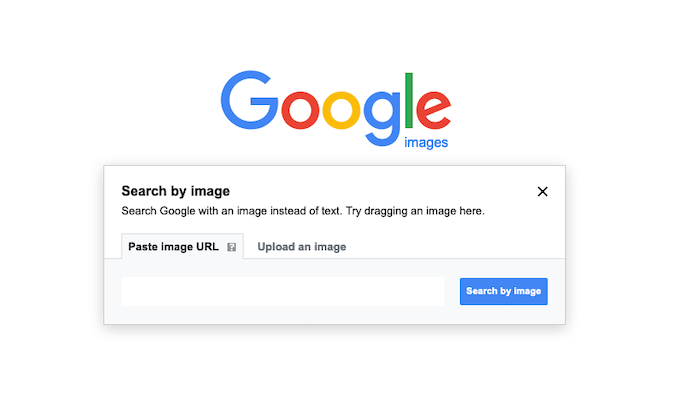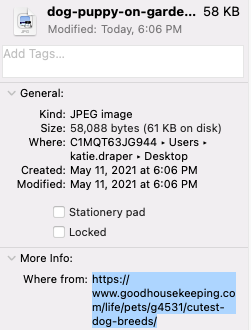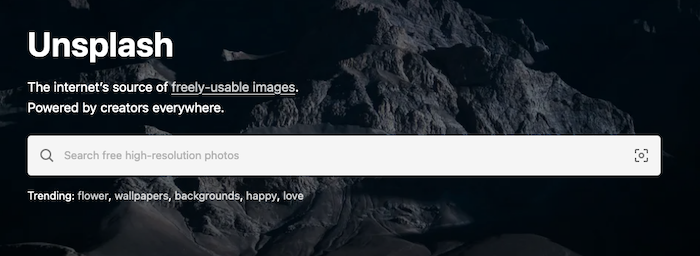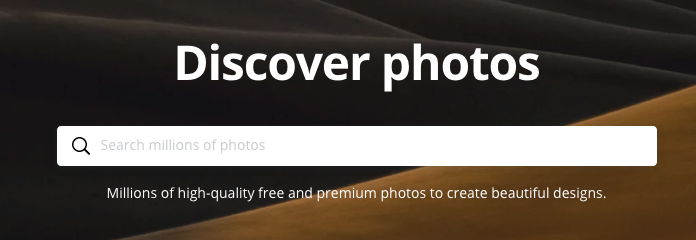If you own a new business, one that is less than two years old, you likely need funding. Who are we kidding? Everyone needs funding of some sort right now. COVID-19 has made sure of that. It is also just as likely that you will have trouble finding funding that you qualify for. Maybe your personal credit isn’t great. Maybe you are still working on building business credit. While there are a ton of new initiatives to help businesses survive in these unprecedented times, they are mostly for existing businesses. Still, there are many options for new business funding as well. Here, we’ve broken them down in a list to help get you started. They are divided into the categories of SBA loans, private lenders, grants, and crowdfunding.
Need New Business Funding? These 20 Sources Can Help
While it isn’t always wise to stack new business funding of the same type, it isn’t a bad idea to stack different types of funding. For example, you could apply for a grant and take out a loan at the same time. You could even run a crowdfunding campaign simultaneously. However, it is important to be careful of having too many loans out at once.
Establish business credit fast with our research-backed guide to 12 business credit cards and lines.
New Business Funding: SBA Loans
These are traditional bank loans, but they have a government guarantee. The Small Business Administration, or SBA, works with financial institutions, like banks, to offer small businesses funding solutions that businesses may not be able to get based on their own credit history. 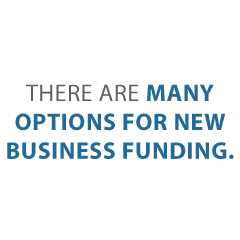 Because of the guarantee from the government, lenders are able to relax a little on the personal credit score requirements.
Because of the guarantee from the government, lenders are able to relax a little on the personal credit score requirements.
In fact, you can get an SBA microloan with a credit score between 620 and 640. They are small loans, only going up to $50,000. Also, they may require personal collateral.
The trade-off with SBA loans is that the application progress is lengthy. There is a ton of red tape connected with these types of loans.
1. 7(a) Loans
This is the Small Business Administration’s main program. It offers term loans up to $5 million. Funds can be used for expansion, purchasing equipment, working capital and more. Banks, credit unions, and other specialized institutions in partnership with the SBA process these loans and disburse the funds.
The minimum credit score to qualify is 680, and there is also a required down payment of at least 10% for the purchase of a business, commercial real estate, or equipment. The minimum time in business is 2 years. In the case of startups, business experience of at least two years will work.
2. 504 Loans
These loans are also available up to $5 million and can buy machinery, facilities, or land. They are generally used for expansion, and private sector lenders or nonprofits process and disburse them. They work especially well for commercial real estate purchases.
Terms for 504 Loans range from 10 to 20 years, and funding can take from 30 to 90 days. They require a minimum credit score of 680. In addition, they use the asset being financed as collateral. There is also a down payment requirement of 10%, which can increase to 15% for a new business.
The 2 years in business, or 2 years management experience in the case of startups, remains.
3. Microloans are a Great Source of New Business Funding
As mentioned, microloans go up to $50,000. They are good for starting a business, purchasing equipment, buying inventory, or for working capital. Community non-profits handle the administration of microloan programs. In contrast to their other programs, financing comes directly from the Small Business Administration.
Interest rates on these loans are 7.75% to 8% above the lender’s cost to fund. The terms go up to 6 years. They can take up to 90 days to fund. For these, the minimum credit score is 640. Furthermore, collateral and down payment requirements vary by lender.
New Business Funding: Alternative Lenders
Private business loans are loans from companies other than banks. They are sometimes also called alternative lenders. There are a few benefits to using private business loans over traditional loans.
First, they often have more flexible credit score minimums. Even though they still use your personal credit, they will usually accept a score much lower than traditional lenders. Also, they will often report to the business credit reporting agencies. This helps build or improve business credit.
Unfortunately, private business loans tend to have higher interest rates and less favorable terms. Still, the ability to get funding and the potential increase in business credit score can make it well worth it. Here are a few alternative, or private, lenders to consider.
Establish business credit fast with our research-backed guide to 12 business credit cards and lines.
4. Fundation
Fundation offers loans for as little as $100 and as high as up to $100,000. The maximum first draw is $50,000. They do have some products that go up to $500,000. Though there is no minimum credit score requirement, they do require at least 3 months in business, $50,000 or more in annual revenue, and a business checking account with a minimum balance of $500.
One thing to remember is that you could have a repayment as high as 5 to 7% of the amount you have drawn, as the repayment period is comparatively short.
Also, Fundation reports to Dun & Bradstreet, Equifax, SBFE, PayNet, and Experian, making them a great option if you are looking to build or improve business credit.
5. BlueVine
The minimum loan amount available from BlueVine is $5,000 and the maximum is $100,000. Annual revenue must be $120,000 or more. In addition, the borrower must be in business for at least 6 months. They require a personal credit score of at least 600. In addition, BlueVine does not offer a line of credit in all states.
They report to Experian. They are one of the few invoice factoring companies that will report any business credit bureau.
6. OnDeck
With OnDeck, applying for financing is quick and easy. Apply online, and you will receive your decision once application processing is complete. Loan funds will go directly to your bank account. The minimum loan amount is $5,000 and the maximum is $500,000.
The personal credit score requirement is 600 or more. In addition, you must be in business at least 3 years and have gross yearly earnings of at least $250,000. Also, there can be no bankruptcy on file in the past 2 years and no unresolved liens or judgements.
OnDeck reports to the standard business credit bureaus.
7. The Business Backer
The Business Backer offers a product they call FlexFund Line of Credit. Funds range in amount from $5,000 to $240,000, and draws can be repaid on either a daily or weekly basis.
They report to Dun & Bradstreet and Equifax.
8. StreetShares
StreetShares started as a service to veterans, but now offers term loans, lines of credit, and contract financing. They also offer small business loan investment options. The maximum loan amount is $250,000, and preapproval only takes a few minutes.
To be eligible for a StreetShares loan, you must be in business at least 12 months with annual revenue of $25,000. There have been cases where they made exceptions and made loans to companies in business at least 6 months with higher earnings. The borrower’s credit score must be at least 620.
9. Fundbox
When Fundbox offers an automated process that is super-fast. Originally, they only had invoice financing. However, now they offer a line of credit service as well. Repayments are automatic on a weekly basis, so be sure you have enough funds in whatever account you connect them to cover your payment each week.
Fundbox loans come as low as $100 and as high as up to $100,000. There are no revenue or time in business requirements, but your accounting or invoice software must be compatible and must be in use for at least 3 months. Furthermore, there is also no specific credit score requirement. You simply have to be an established business with regular monthly revenue.
10. Fora Financial
Founded in 2008 by college roommates, they now fund more than $1.3 million in working capital around the country. There is no minimum credit score, and there is an early repayment discount if you qualify.
The minimum loan amount is $5,000 and the maximum is $500,000. The business must be at least 6 months in operation and the monthly revenue has to be $12,000 or more. There can be no open bankruptcies.
11. Lendio
The secret to Lendio’s success is customer service and a short, easy application process. This is due to its heavily vetted network of lenders. Sometimes, funding happens in as little as 24 hours.
One easy application can result in offers from as many as 75 lenders to choose from. The minimum loan amount is $500 and the maximum is $5,000,000. You must operate your business in the US or Canada. In addition, you must have a business bank account, and your personal credit score must be at least 560.
12. Credibly
Credibly’s specialty is unsecured business loans. The application process and funding can be completed in as little as two days. Sometimes even less than that. They offer daily and weekly repayment options.
The minimum loan amount is $5,000 and the maximum is $250,000. First, they require a personal credit score of at least 500. Next, there is a 6 months or more in business requirement. At least $15,000 plus in average monthly deposits is also required.
13. Kabbage
Kabbage offers a small business line of credit that can help accomplish your business goals quickly. The minimum loan amount is $500 and the maximum is $250,000. They require you to be in business at least one year and have $50,000 or more in annual revenue or $4,200 or more in monthly revenue over the last 3 months.
They are great if you need cash quickly. Also, their non-traditional approach puts less weight on your credit score.
New Business Funding: Grants
New business funding in the form of grants are available from a number of sources. A lot of these are designed specifically to help those business owners that are minorities, females, or veterans. Be sure to check out local organization options as well.
Here are a couple of options that are open to everyone.
14. FedEx Small Business Grant
FedEx uses this grant as a way to strengthen small business innovation. The company awards 10 grants. They range from $15,000 to $50,000 every year.
Establish business credit fast with our research-backed guide to 12 business credit cards and lines.
You have to submit an entry via the FedEx website. There are a few questions about your business. An elevator pitch about what makes your business stand out is also required. In addition, you have to explain how you would use the grant funds. A 90-second video submission is optional.
15. NASE Growth Grants
The National Association for the Self-Employed (NASE) has small business Growth Grants that go up to $4,000. Grant recipients must be micro-businesses. Funds can be used for marketing, expansion, and to hire employees. These grants are open to everyone. However, you have to be a NASE member to apply. Cost of membership depends on the member level you choose.
This is not all that is out there. Do your research, and remember additional grant options are available to women and minority business owners.
New Business Funding: Crowdfunding
Crowdfunding sites allow you to tell thousands of micro investors about your business. Anyone who wants to donate, or invest, can do so.
Investors offer amounts depending on the campaign and the platform you use. They may give $50, they may give $150, or they may give over $500. It might just be $5. Truly, any amount helps, right?
Though not always necessary, most entrepreneurs offer rewards to investors for their generosity. Usually, this comes in the form of the product the business will be selling. Different levels of giving result in different rewards. For example, a $50 gift may get you product A, and a $150 gift will get you an upgraded version of product A.
There are a lot of crowdfunding platforms out there. Here are a few to consider.
16. Kickstarter
They are the largest crowdfunding platform. They have over 14 million backers and over 130,000 funded projects. Campaigns are for products and services such as:
- Publishing
- The arts and film
- Comics and illustration
- Design and tech
A prototype is necessary. Projects cannot be for charity, although nonprofits can use Kickstarter. Equity cannot be offered as an incentive.
Taboo projects and perks include anything to do with:
- Contests and raffles
- Cures and medicines
- Credit services
- Live animals
- Alcohol
- Weapons
There is a 5% fee on all funds which creators collect. The payment processor also applies payment processing fees, which are roughly 3-5%. If your campaign is not successful you do not pay a fee. There are also fees of 3% + $0.20 per pledge. Pledges under $10 have to pay a discounted micro pledge fee of 5% + $0.05 per pledge.
17. Indiegogo
Indiegogo has over 9 million backers. Their minimum goal amount is $500. They charge 5% platform fees and 3% + 30¢ third-party credit card fees. Fees are deducted from the amount raised, not the goal you set. As a result, if you raise more than your goal, you will pay more in fees. They also offer a flexible funding option. This allows campaigns to keep any money they receive even if they do not reach their goal.
18. RocketHub
RocketHub is more for entrepreneurs who want venture capital. They give you an ELEQUITY Funding Room. This is where you can pitch your idea and see if it stirs up any interest from potential investors.
The platform is specifically for business owners working on projects in these categories:
- Art
- Business
- Science
- Social
If you reach your fundraising goal, there will be a 4% fee. In addition, you’ll pay a 4% credit card handling fee. But if you do not reach your goal, that fee jumps up to 8% plus the credit card handling fee.
19. CircleUp
CircleUp aims to help emerging brands and companies raise capital to grow. However, companies must apply and show revenue of at least $1 million to get a listing on the site. Still, they will sometimes make exceptions.
Due to its more thorough process, CircleUp can be good for entrepreneurs who already have a somewhat established business. These are business owners who want both funding and guidance in order to take their businesses to the next level.
New Business Funding: Strong Overall Fundability
This really comes from yourself. It’s not an outside source. Of course, there are many things that affect fundability, but one you can work on while you are using personal credit or investors for new business funding is business credit.
20. Build Business Credit
Whichever type or types of new business funding you choose to use, be sure to work on building business credit at the same time. This is a major part over overall fundability. Without strong fundability, it is hard to get any type of funding really. Personal credit will only get you so far when it comes to building and running a business.
The post 20 Sources of New Business Funding to Help You Get Started appeared first on Credit Suite.




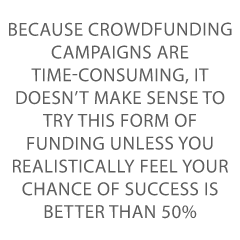 Standard widgets or service-based businesses do not tend to attract brand ambassadors. They won’t tend to get donors too fired up. Because crowdfunding campaigns are time-consuming, it doesn’t make sense to try this form of funding unless you realistically feel your chance of success is better than 50%
Standard widgets or service-based businesses do not tend to attract brand ambassadors. They won’t tend to get donors too fired up. Because crowdfunding campaigns are time-consuming, it doesn’t make sense to try this form of funding unless you realistically feel your chance of success is better than 50%


